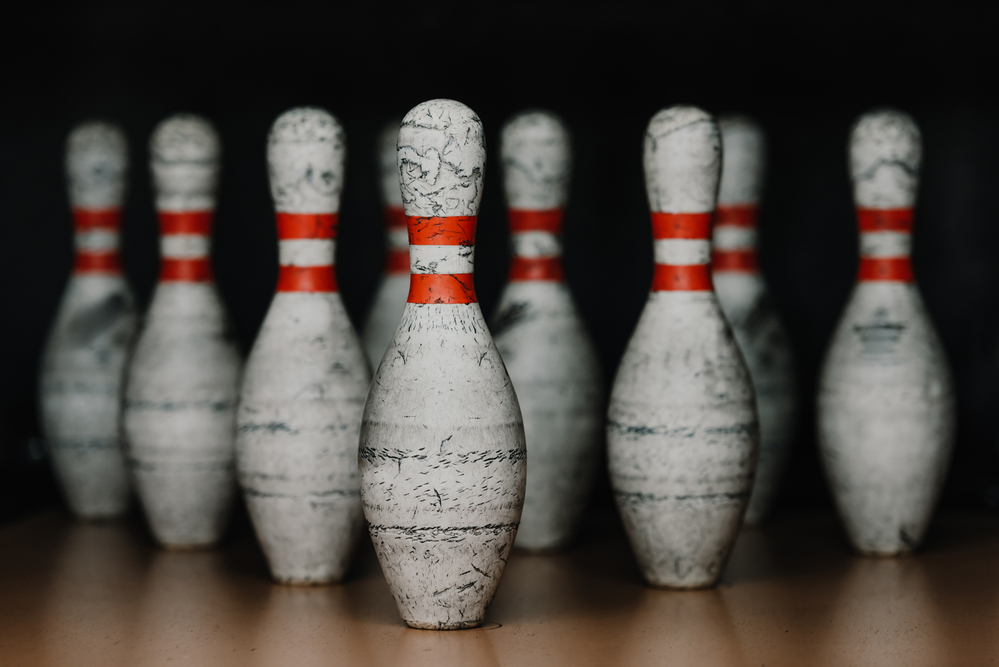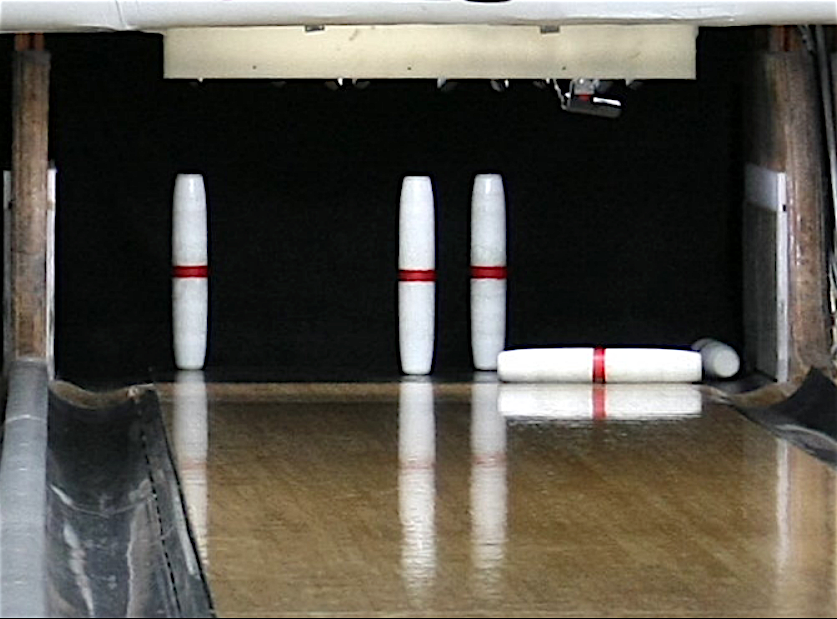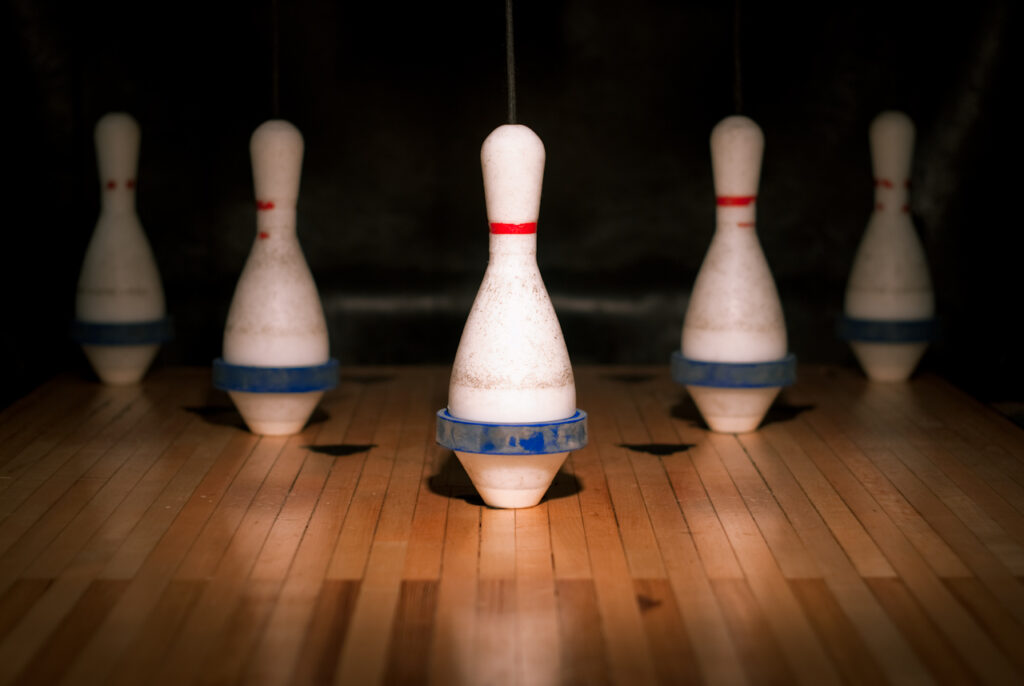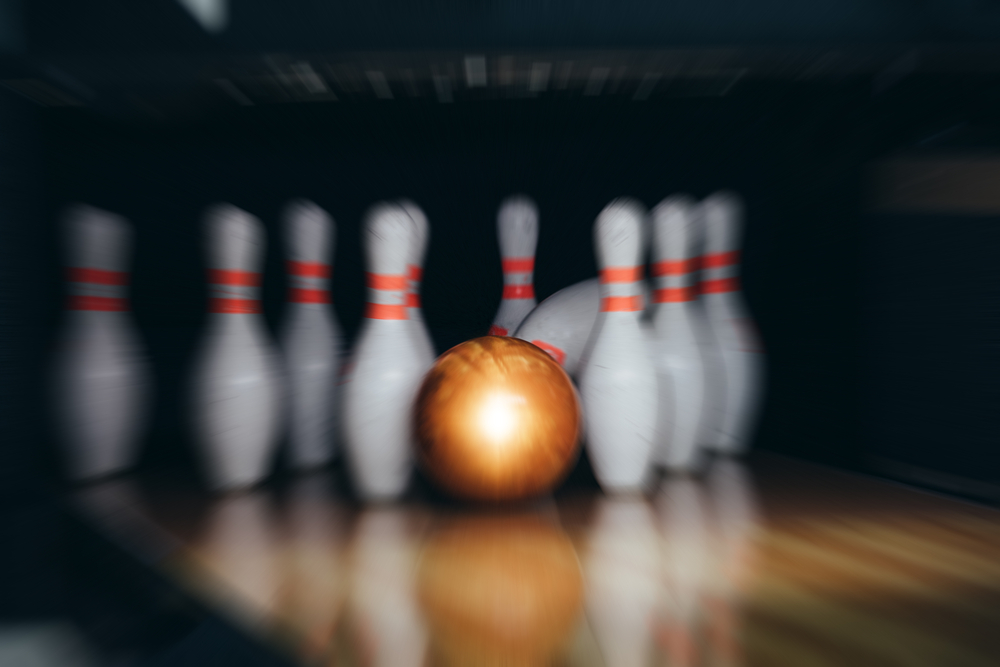
When anyone starts to learn how to bowl, most of the focus tends to fall on choosing the right ball and how to use it to get the most points in a game.
It’s a logical place to start, considering how much the professional community talks about these things and how important they are to your game.
Yet there’s another factor in bowling that is often overlooked, especially when it comes to beginners: bowling pins. Read on to learn more about how much a bowling pin weighs and how it can significantly change your game. Let’s get right into it!
Contents
How Much Do Bowling Pins Weigh
Most people are familiar with typical house bowling pins, which weigh about 3 lbs and 6 oz., or 1 ½ kg. In the US, the United States Bowling Congress (USBC) decides what the weight of a pin should be.
World Bowling has adopted the same regulation bowling pin weight for bowling pins internationally, making pins reasonably consistent no matter where you decide to bowl. The pins should not weigh more than 3 lbs, 10 oz, or 1.6 kg as per regulations.
10-Pin Bowling Pin Weights
Ten-pin bowling pins tend to be large and heavy and are the ones that you see used in most bowling games. When most people across the United States - and even the world - think about bowling pins and bowling as a sport, this is typically what they'll be imagining.
Every single pin comes in at around 3.5 lbs or 1 ½ kg. They stand about 15 inches tall and measure about 4.7 inches at their widest point.
However, these pins come in various styles, and you can bowl using one of three different types of 10-pin bowling pins. They are as follows:
- Vulcan Vultex 2 Bowling Pin: Technology has brought the next level of bowling pins to the marketplace with this durable option for those able to make a bit more of an investment. They’re covered with the latest protective coatings designed by science and perfected through extensive testing. They can withstand strike after strike. These cutting-edge pins cost more than your standard Winsome bowling pin but can last much longer due to their long-lasting protective coating.
- Winsome Bowling Pin: This pin is widely used for more casual yet still competitive settings and is most likely the one that is used in your local bowling alley. They’re an affordable and reliable brand, providing local business owners with a way to combine value and quality pins for fun and tournament play.
- Brunswick PBA Gold Pin: These pins are the gold standard of bowling pins and are used during most professional tournaments. Since these are considered by many to be the best pins that can be used in bowling, they proudly display the PBA logo to set themselves apart from all other 10-pin bowling pins. You’ll know that you’re playing a professional-level game whenever you see these pins on your lane.
Candlepin Bowling Pin Weights
If you live in the New England area, these are the pins you’ve most likely seen in use at your local bowling alley. A distinct difference between these pins and other bowling pins 10-pin bowling pins is that these pins do not have a neck.
As a result, these pins are far lighter than the typical 10-pin bowling pins, coming in at around 2.4 lbs or 1.1 kg. If you’re bowling with these pins, you’ll need to use a lighter ball than your typical fare to compensate for these pins’ weight. You’ll find that these pins are also taller than your typical 10-pin, coming in at 15 ¾ inches, while they are 2.9 inches at their widest point.

Five Pin Bowling Pin Weights
While you don’t see five-pin bowling in play very often since the well-known standard is the ten-pin variety, it is a variety available for bowlers looking for a bit of a different challenge.
These pins top out at a height of 12 ½ inches and have a 5-inch diameter at their widest point. These pins typically weigh in at around 2 lbs and 7 oz.
All around, it’s a unique experience that’s worth giving a chance if you ever have the opportunity.

Ninepins Bowling Pin Weights
These pins are also known as Kegel’s pins. They weigh about 2.86 lbs and are about as wide as a 10-pin. This is a pin variety most commonly used in Europe, with championships being held annually.
Are PBA Pins Heavier?
The Professional Bowlers Association (PBA) is the governing body of professional bowling, and they have set the regulatory weight of 3 lbs 8 oz, give or take 2 oz, for standard 10-pin games. The weight of PBA pins can vary depending on the set of pins and their manufacturing specs, but they must fit within the regulations.
The most notable case of a heavier PBA pin is the Brunswick PBS Gold Pin.
It weighs in at the maximum 3 lbs, 10 oz allowed by the PBA and has proven to be a bit of a challenge to even some of the best bowlers playing in professional tournaments. This is one of the reasons it’s often used in these competitions.
Does a Bowling Pin’s Weight Affect Your Scoring Potential?
Every single aspect involved in a bowling game can affect your scoring potential, from how the alley is waxed, to the sort of bowling ball you use, and yes - even the bowling pins’ weight.
You can polish, master, and adapt your game when you practice with a specific set of pins or similarly weighted pins. You learn how the pin responds to your throws and can tweak your performance until you find your rhythm, being able to rely on familiar physics for each throw.
When you bowl and find yourself puzzled by the pin’s reaction upon impact, it could mean that your pins are too heavy or too light. It never hurts to take a step back and double-check that you’ve taken your pins’ weight and type into consideration in your bowling strategy.
There isn’t a minimum weight requirement for bowling balls, but they have a maximum 16 lb limit on their weight. If you don’t use your own bowling ball, always choose a similar house ball size for each game you play and even while you practice.
If you’re sure that your ball weight is always consistent, and yet the pins are not responding the way you’ve learned to expect, it’s much more likely that the pins' weight could be the problem.
The purpose of the weight standard is to allow for fair games for everyone in the sport worldwide. If the pin weight were unregulated, you’d never know what to expect when bowling at a new bowling alley or in a league tournament.
You’d always have to spend some time getting acclimated to the pins’ weight.

Related Articles
So there you have it – and now that you know how much each type of bowling pin weighs don’t usually vary too much in weight, and it’s by design. You can rest assured that when you go to a random bowling alley, the pins’ weight will be similar to what you’re used to.
Now that you understand bowling pin weights continue to expand your knowledge by learning about bowling ball weights, lane oil patterns, and more.
There’s so much to take in, and all of it is important.
Taking all game factors and variances into account is the most innovative way to take your bowling skills to the next level. We hope that you found this article helpful and we wish you the best as you dive headfirst into what bowling is all about!
Kira Byrd, a Certified Fraud Examiner, holds a B.S. in Accounting from the University of Alabama at Birmingham. With a passion for bowling from her childhood, Kira has poured her expertise and personal experiences into creating and nurturing Bowling For Beginners. Kira's mission is to meet new bowlers where they are and guide them toward consistently achieving higher scores. With a focus on skill development and strategic techniques, she empowers readers to take control of their game and unlock their true potential.
Bowling For Beginners embodies strict editorial integrity, ensuring reliable and unbiased information. Kira's commitment to delivering valuable insights and practical strategies is reflected in every article. Here's an explanation of our editorial policy and how we get money.





